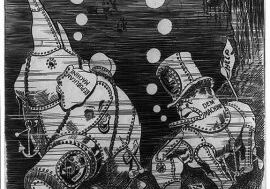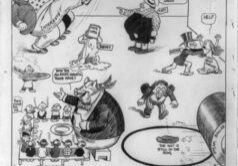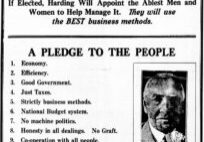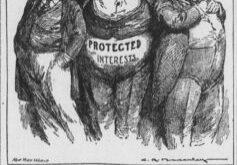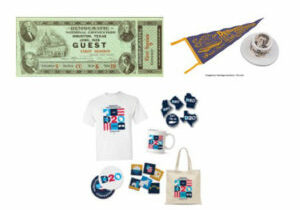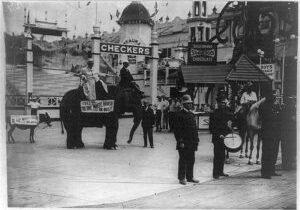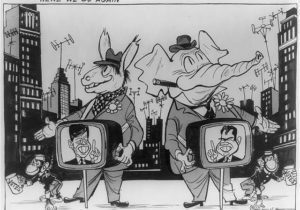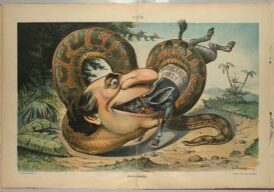Lesson Plans
How Well Do Our Parties Represent Us?
Students analyze primary sources to better understand the two-party political system in the United States through investigation of the manner in which political parties gained and nurtured constituents in the later 19th century and actions they took in the mid-20th century that brought satisfaction/dissatisfaction among constituents. After, students identify one significant reform either in electoral processes or at the party level that could result in greater responsiveness to the will of the people.
Everybody’s Doing It!
Students consider point of view and creator purpose as they analyze an historical political cartoon, then create a political cartoon that relates to federal, state or local government today that keeps the title, “Everybody’s Doing It!”
United States: Biggest Business in the World
Students analyze an historical campaign ad from the 1920 presidential election to consider the purpose and power of political campaign pledges. After, students explore the tactic of comparing the United States to a business both in historical and contemporary contexts.
Identifying Bias in Presidential Election Newspaper Coverage
Students analyze historical primary sources to identify bias and investigate the role newspapers played in shaping public attitude toward the 1912 presidential candidates. Next, students team up to find newspaper coverage (print or digital) of a contemporary presidential election, analyze the sources for bias, and then compare and contrast their historical and contemporary findings. Finally, students communicate their newfound understandings of presidential election newspaper coverage bias through a short written essay, a digital timeline, or a print or digital poster.
Technology & Presidential Nominating Conventions
Students analyze primary sources and other resources from 1928, 1960, and 2020 to investigate and consider the impact changes in technology had on presidential nominating conventions. After, students envision future technologies and how they might be used to impact future presidential elections.
Political Parties – Beginning
Students investigate the major political parties in the United States and the role they play in U.S. elections, then create political parties focused on issues affecting students at their school.
Political Parties – Intermediate
Students investigate the two-party system in the United States and analyze partisan priorities, then create political parties that speak to issues affecting young people.
Political Parties – Advanced
Students gain a deeper understanding of political parties and the role they play in U.S. elections, evaluate how partisan priorities have changed over time, and then create political parties that speak to issues affecting young people as well as people of other generations.
The Formation of Political Parties
Students work in groups to investigate a case study using primary sources to help answer the question “Why do political parties form?” Students then use their learning to advise one of the two major U.S. political parties about a fledgling new "Teen Party".
Presidential Election Campaigns: Goal!
Students investigate presidential elections in the early 20th century, then read contemporary newspaper articles related to contemporary presidential election campaigns from different ends of the political spectrum and present their learning through creation of a modern political cartoon.

